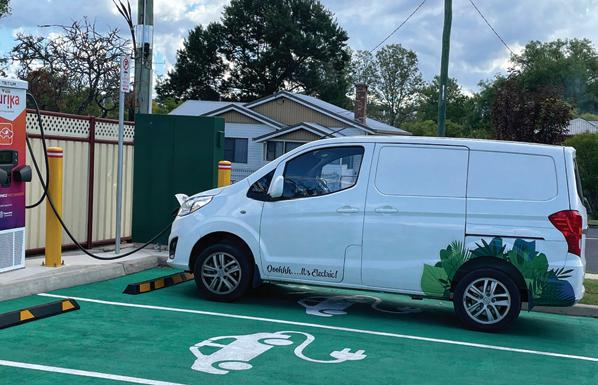
2 minute read
Debunking some renewable energy myths from Southern Downs Media
Green Gals
Contributed
Advertisement
There is a lot of misinformation these days about EVs (electric vehicles) and renewable energy. It doesn’t even need to be remotely credible. Often it can be fact checked with just a few reliable sources. But the misinformation can spread like wildfire until it’s commonly accepted as fact.
Local media opinion on the Southern Downs last week stated: “I heard a story the other day of a couple who pulled up at a fairly isolated place and were pleased that the business had an EV charging station. Great, except the place was powered by a diesel generator.” Our response to this is: This old trope is often shared with a guffaw about how the “greenies” are being tricked and that electric cars are “just as bad, if not worse” for the environment.
The Green Gals’ further fact check in response: A quick search shows that in November 2022, the Australian Associated Press debunked this very story, stating: “A video circulating on social media claims that an electric vehicle (EV) charging station in the Nullarbor is powered by diesel fuel. The claim is mostly false. The Caiguna Roadhouse EV charging point is fuelled by chip (vegetable) oil recycled from the roadhouse’s deep fryer. On rare occasions when the temperature drops too low the charger requires diesel to get it started.” Doesn’t quite fit the story does it?
Similarly, criticisms of renewable energy sources like solar and wind often question how much raw materials and power go into their generation - but never question how much raw materials and power goes into generating coal and gas and oil. A 2021 comparison from UNECE of the life-cycle emissions of all the major power sources showed that the grams of carbon dioxide equivalent per kilowatt-hour of electricity generated were 751-
1095 for coal, 403-513 for gas, 27-122 for solar and 7.8-16 for wind power. Solar panels generate enough electricity to cover their build energy within 1-2 years; wind within 3-6 months. Both can last 25-30 years or more, providing emissions-free electricity for the majority of that time.
In addition, new wind and solar are gaining efficiency every year. And good news – solar panels are becoming much more eco-friendly over time. Solar manufacturers like Tindo Solar in Adelaide are entirely powered by solar as well as having an end-oflife recycling program that will recycle the panels at the end of their life.
As technology progresses, we’re seeing more innovation in the solar industry, with the introduction of more sustainable materials. New battery types are being developed constantly - like from Brisbane based zinc-bromine flow battery maker Redflow. Recycling is increasingly common for batteries, wind and solar. A typical crystalline silicon PV panel is made of materials that can be recycled, including glass, polymer, aluminium, silicon, and copper. If we reuse these elements, we can decrease solar panels’ greenhouse gas emissions by 42%. The waste materials from fossil fuels rarely receive attention - like the millions of tons of coal ash that are dumped in Australia every year.
Australia is lucky to have our world-beating solar and wind resources. Carefully accessed they can give us cleaner and much cheaper energy than fossil fuels far into the future.


























